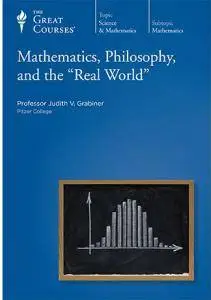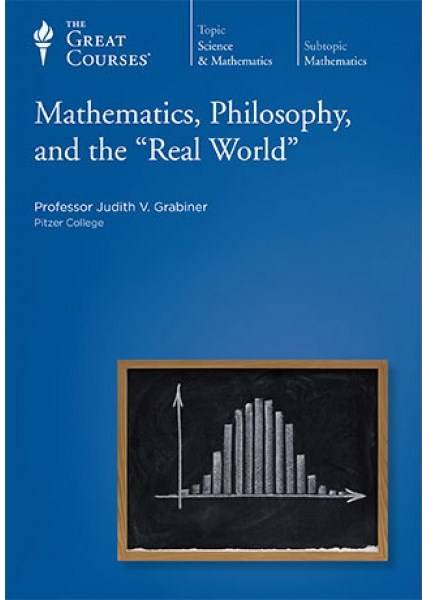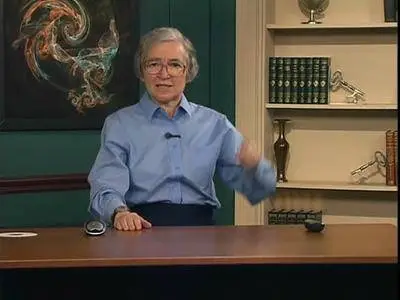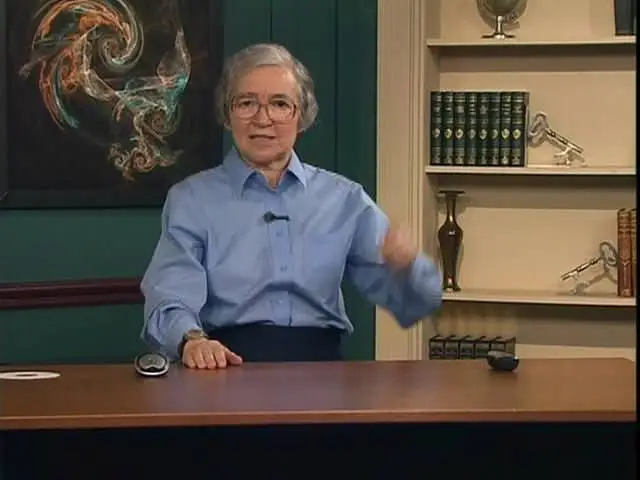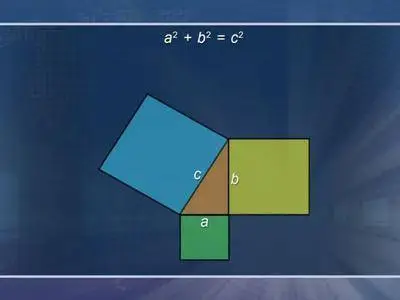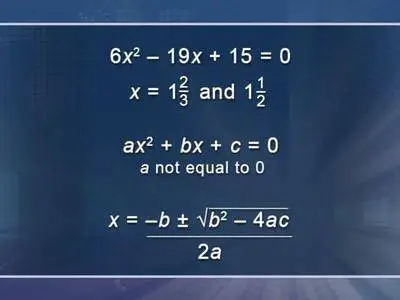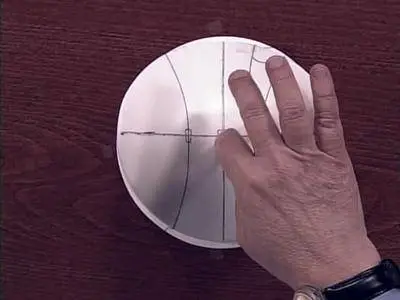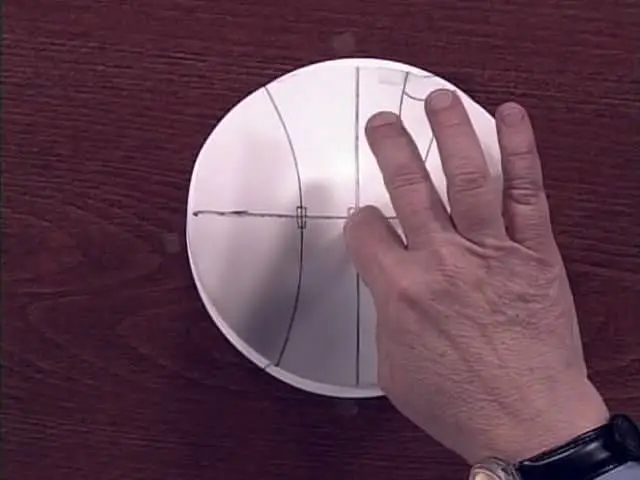Mathematics, Philosophy, and the "Real World"
36xDVDRip | AVI/XviD, ~719 kb/s | 640x480 | Duration: 24:49:50 | English: MP3, 96 kb/s (2 ch) | + PDF Book | 6.49 GB
Genre: Mathematics, Philosophy
36xDVDRip | AVI/XviD, ~719 kb/s | 640x480 | Duration: 24:49:50 | English: MP3, 96 kb/s (2 ch) | + PDF Book | 6.49 GB
Genre: Mathematics, Philosophy
Mathematics has spread its influence far beyond the realm of numbers. The concepts and methods of mathematics are crucially important to all of culture and affect the way countless people in all spheres of life look at the world. Consider these cases:
When Leonardo da Vinci planned his mural The Last Supper in the 1490s, he employed geometric perspective to create a uniquely striking composition, centered on the head of Jesus.
When Thomas Jefferson sat down to write the Declaration of Independence in 1776, he composed it on the model of a geometric proof, which is what gives it much of its power as a defense of liberty.
When Albert Einstein developed his theory of general relativity in the early 20th century, he used non-Euclidean geometry to prove that the path of a ray of light, in the presence of a gravitational field, is not straight but curved.
Intriguing examples like these reflect the important dialogue between mathematics and philosophy that has flourished throughout history. Indeed, mathematics has consistently helped determine the course of Western philosophical thought. Views about human nature, religion, truth, space and time, and much more have been shaped and honed by the ideas and practices of this vital scientific field.
Award-winning Professor Judith V. Grabiner shows you how mathematics has shaped human thought in profound and exciting ways in Mathematics, Philosophy, and the "Real World," a 36-lecture series that explores mathematical concepts and practices that can be applied to a fascinating range of areas and experiences.
Believing that mathematics should be accessible to any intellectually aware individual, Professor Grabiner has designed a course that is lively and wide-ranging, with no prerequisites beyond high school math. For those with an interest in mathematics, this course is essential to understanding its invaluable impact on the history of philosophical ideas; for those with an interest in philosophy, Professor Grabiner's course reveals just how indebted the field is to the mathematical world.
Math Meets Philosophy
In a presentation that is clear, delightful, and filled with fascinating case histories, Professor Grabiner focuses on two areas of mathematics that are easily followed by the nonspecialist: probability and statistics, and geometry. These play a pivotal role in the lives of ordinary citizens today, when statistical information is everywhere, from medical data to opinion polls to newspaper graphs; and when the logical rules of a geometric proof are a good approach to making any important decision.
Mathematics, Philosophy, and the "Real World" introduces enough elementary probability and statistics so that you understand the subtleties of the all-important bell curve. Then you are immersed in key theorems of Euclid's Elements of Geometry, the 2,200-year-old work that set the standard for logical argument. Throughout the course, Professor Grabiner shows how these fundamental ideas have had an enormous impact in other fields. Notably, mathematics helped stimulate the development of Western philosophy and it has guided philosophical thought ever since, a role that you investigate through thinkers such as these:
Plato: Flourishing in the 4th century B.C.E., Plato was inspired by geometry to argue that reality resides in a perfect world of Forms accessible only to the intellect—just like the ideal circles, triangles, and other shapes that seem to exist only in the mind.
Descartes: Writing in the 17th century, René Descartes used geometric reasoning in a systematic search for all possible truths. In a famous exercise, he doubted everything until he arrived at an irrefutable fact: "I think, therefore I am."
Kant: A century after Descartes, Immanuel Kant argued that metaphysics was possible by showing its kinship with mathematics. The perfection of Euclidean geometry led him to take for granted that space has to be Euclidean.
Einstein: Working in the early 20th century with a concept of "straight lines" that was different from Euclid's, Albert Einstein showed that gravity is a geometric property of non-Euclidean space, which is an essential idea of his general theory of relativity.
Non-Euclidean Geometry Explained
The discovery of non-Euclidean geometry influenced fields beyond mathematics, laying the foundation for new scientific and philosophical theories and also inspiring works by artists such as the Cubists, the Surrealists, and their successors leading up to today.
Non-Euclidean geometry was a stunning intellectual breakthrough in the 19th century, and you study how three mathematicians, working independently, overthrew the belief that Euclid's geometry was the only possible consistent system for dealing with points, lines, surfaces, and solids. Einstein's theory of relativity was just one of the many ideas to draw on the non-Euclidean insight that parallel lines need not be the way Euclid imagined them.
Professor Grabiner prepares the ground for your exploration of non-Euclidean geometry by going carefully over several of Euclid's proofs so that you understand Euclid's theory of parallel lines at a fundamental level. You even venture into the visually rich world of art and architecture to see how Renaissance masters used Euclidean geometry to map three-dimensional space onto flat surfaces and to design buildings embodying geometrical balance and symmetry. The Euclidean picture of space became internalized to a remarkable extent during and after the Renaissance, with a far-reaching effect on the development of philosophy and science.
Algebra - A Complete Course
Brainetics Deluxe Math and Memory Set
Chalk Dust - Algebra - Introductory and Intermediate
Chalk Dust - College Algebra
Chalk Dust - Geometry
Chalk Dust - PreAlgebra
Chalk Dust - PreAlgebra DVD
Chalk Dust - Basic College Mathematics
Educator - Mathematics: AP Statistics with: Professor Yates
Educator - Multivariable Calculus
fxphd - MTH101 - Mathematics for Visual Effetcs and Design
Elementary School Learning System - Grades 1 - 5 (2006)
MIT 0CW - Probabilistic Systems Analysis and Applied Probability
The Geometry Tutor
Understandable Statistics
Standard Deviants - Differential Equations
BrightStorm Math
Vector Calculus and Complex Variables
Introduction to Dynamical Systems and Chaos
Methods for Partial Differential Equations
Calculus of Variations
Scientific Computing
Dynamical Systems
Computational Methods for Data Analysis
Applied Linear Algebra and Introductory Numerical Analysis
Mathematical Decision Making: Predictive Models and Optimization
Mathematics Describing the Real World: Precalculus and Trigonometry
Geometry: An Interactive Journey to Mastery
Discrete Mathematics
Understanding Calculus II: Problems, Solutions, and Tips
Thinkwell - Calculus
Thinkwell - Pre-Calculus
Thinkwell Trigonometry
Thinkwell College Algebra
Harvard Abstract Algebra
Math Made Easy - Advanced Calculus
Math Made Easy - Trigonometry
Math Made Easy - Calculus Semester 1
Math Made Easy - Calculus Semester 2
Trigonometry and Pre-Calculus Tutor
Video Aided Instruction - Statistics
The 1st - 7th Grade Math Tutor
Video Aided Instruction - Probability
Video Aided Instruction - Precalculus
Video Aided Instruction - Calculus I
Video Aided Instruction - Calculus II
Welcome to the best eLearning video (English, German, French, Spanish language) and many more: LINK
Do not forget to check my blog! Updated regularly! Add in bookmarks my blog :)
PM me if Links not working!
Do not forget to check my blog! Updated regularly! Add in bookmarks my blog :)
PM me if Links not working!
No mirrors pls!


